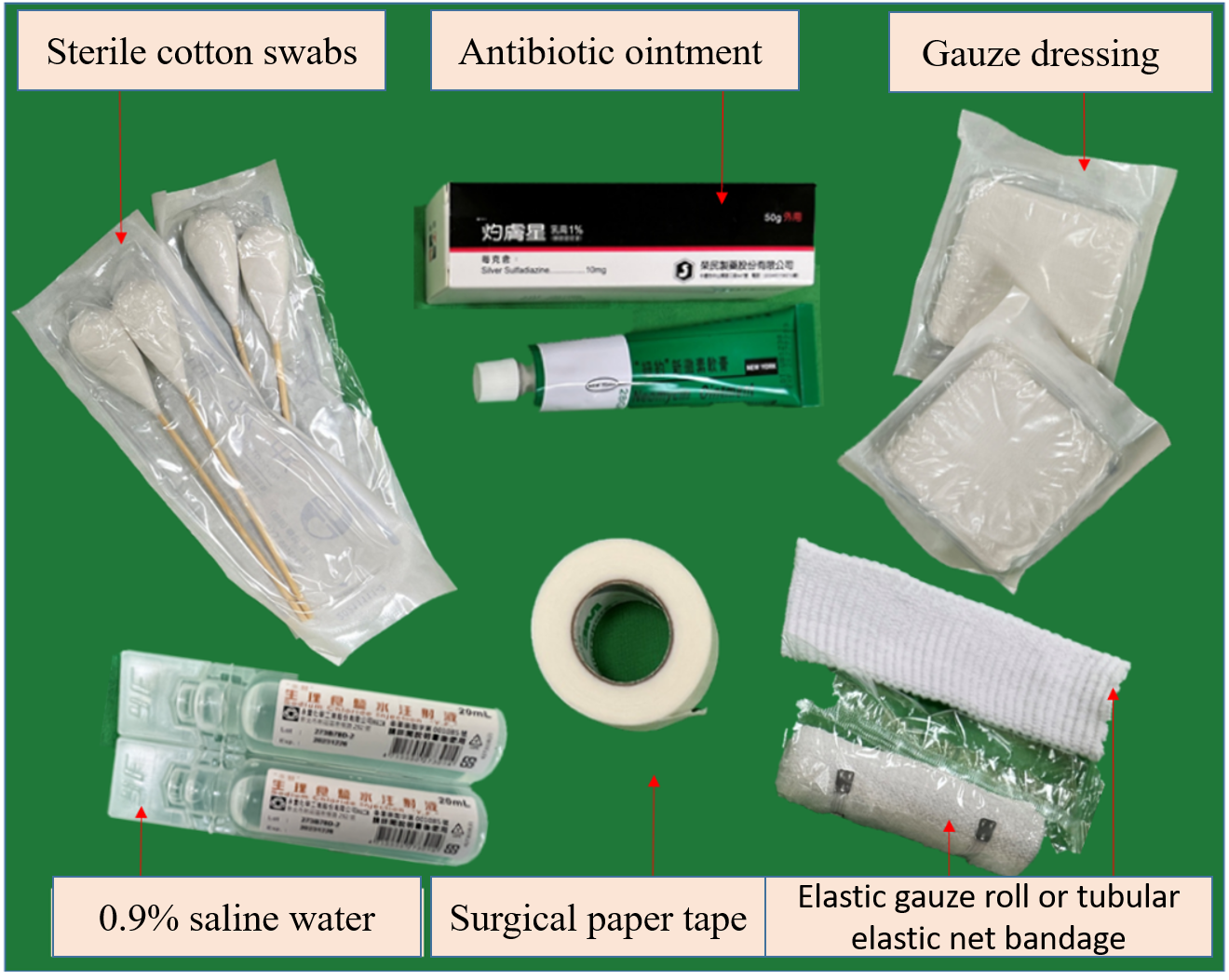【Major Points】
- I will be able to know what to prepare for caring for a burn injury.
- I will be able to know the steps to take care of a burn injury at home.
- I will be able to know when to seek immediate medical attention for a burn injury.
Why is care needed after burn injuries?
Burns and scalds refer to injured tissue, such as skin or eyes, that were damaged by heat, electric shock, chemical substances, friction or radiation. Reducing the temperature of the burnt area as soon as possible within 30 minutes can ease the severity and pain of burn. Also, applying continuous care can help wound healing and prevent wound infections.
Burns and scalds refer to injured tissue, such as skin or eyes, that were damaged by heat, electric shock, chemical substances, friction or radiation. Reducing the temperature of the burnt area as soon as possible within 30 minutes can ease the severity and pain of burn. Also, applying continuous care can help wound healing and prevent wound infections.
When is care needed?
Symptoms of a burn or scald include redness, pain, and blisters; in severe cases, the skin may appear charcoal or pale, and the sensation of pain could be reduced or even disappear. Emergency treatment is required when the above symptoms are present.
Symptoms of a burn or scald include redness, pain, and blisters; in severe cases, the skin may appear charcoal or pale, and the sensation of pain could be reduced or even disappear. Emergency treatment is required when the above symptoms are present.
Supplies:
Care after burns can be divided into emergency treatment on scene and wound care at home.
- Prepare these items below immediately when burns occur
- Running cool water.
- Sterile gauze or clean towels and clothing.
- Supplies for wound care at home (Picture 1)
- Sterile cotton swabs.
- 0.9% saline water.
- Antibiotic ointment (not necessarily, used in medical prescriptions).
- Proper size of gauze or dressing
- Surgical paper tape.
- Elastic gauze roll or tubular elastic net bandage.

Picture 1 Supplies for wound care
Steps:
If a burn injury involves the face, one's breathing may be affected. When the individual appears to have burnt nose hair, carbon particles in their nostrils, change in voice, difficulty vocalizing or breathing, or respiratory distress, he or she should be transferred to a hospital immediately. Further emergency treatment can proceed in the ambulance or hospital.
- Emergency treatment: actions required immediately after burn injury →Rinse (Pour cool water over burnt areas)→Strip (Remove all clothes while rinsing) →Cover (Cover with a clean cloth) →Transfer (get to a hospital immediately)
- Rinse:
- Hold the burnt area under cool running water (suggested temperature of 10°~25°C) for at least 15-30 minutes until the pain and heat sensation eases. Make sure the person keeps warm.
- Don't use ice water. Ice water can cause further damage to the tissue.
- A chemical burn requires high-volume irrigation.
- Strip:
- Gently remove all clothing while rinsing the burnt area with cool running water.
- Don't try to remove clothing stuck in the burn.
- Cover:
- Cover the burnt area with a clean, soft towel or cloth after irrigation.
- Pat dry instead of wiping since the skin of the burnt area can be relatively fragile.
- Do not apply soy sauce paste, toothpaste, ointment or medicines of unknown origin onto the wound by yourself.
- Transfer:
- If pain persists, or wounds or blisters appear after the irrigation, the area should be covered with gauze or clean clothes and seek immediate medical attention.
- If your burn is on the face, joint, or perineum or is an electrical burn, seek immediate medical attention regardless of the wound size.
- Rinse:
- Home burn care: steps for wound care at home
- Remove the old dressing:
- Wash your hands.
- Gently remove tapes. Secure the skin with your fingers, and separate the skin down from the tape. Then remove the old gauze.
- If the gauze is stuck to the wound, rinse with saline on the site, then gently remove the gauze.
- Observe the wound:
- Check the symptom of the wound (changes of size; amount, colour, or smell of discharge).
- Put on gloves to palpate the wound if there are any signs of infection, including redness, swelling, heat, or pain.
- Clean the wound:
- Wet a cotton swabs with saline water to clean old ointment and drainage on the wound.
- Clean the wound from the center of the wound toward the outer area in a circular motion.
- Clean toward 2-3 cm of the outer edge (Notes: use one cotton swab each time. Single-use only).
- Dry the wound: After the wound is cleaned, pat the area dry with a dry cotton swab from the inside out.
- Dress the wound:
- Apply antibiotic ointment as prescribed by a doctor and avoid any medication of unknown origin.
- Cover with gauze 1cm beyond the outer edge of the wound.
- Secure the dressing with tape.
- Apply elastic gauze or net bandage to fix the whole dressing.
- Remove the old dressing:
Care principles:
- Avoid any contact of the burnt area with heated objects or environments.
- Burn wounds with blisters or abrasion should be covered with sterile dressings and kept dry.
- Your physician will assess and determine if you need a tetanus shot or not.
- Don't break blisters by yourself. Your physician will assess and decide if the blisters can be broken or not. When the wound deepens or has large blisters, further debridement (removal of dead tissue, foreign material, and infected bacteria) may be required.
- Take medication (e.g. pain killer etc.) as prescribed or change dressing as instructed, and follow up as determined by your physician.
- Observe the wound regularly. If there are symptoms of fever, wound redness and swelling, enlarged blisters, or abnormal sensation (such as tingling, numbness or something crawling across the skin) seek immediate medical attention (Request an appointment: plastic surgery clinic).
References
- Hermans, M. H. (2019). An Introduction to burn care. Advances in Sin & Wound care, 32(1), 9-8.https://doi.org/10.1097/01.ASW.0000549612.44844.75
- Wiktor, A., & Richards, D. (2021). Treatment of minor thermal burns. UpToDate. Retrieved November 03, 2021, from https://www.uptodate.com/contents/treatment-of-minor-thermal-burns.
- American Academy of Family Physicians. (2020, April 15). Burn Injuries: What You Should Know. https://www.aafp.org/afp/2020/0415/p463-s1.html.
Quiz
Please answer the following questions:
Nursing Instruction Satisfaction
Please log in to rate
- Location
-
- Category
- Self-care / Home Care

